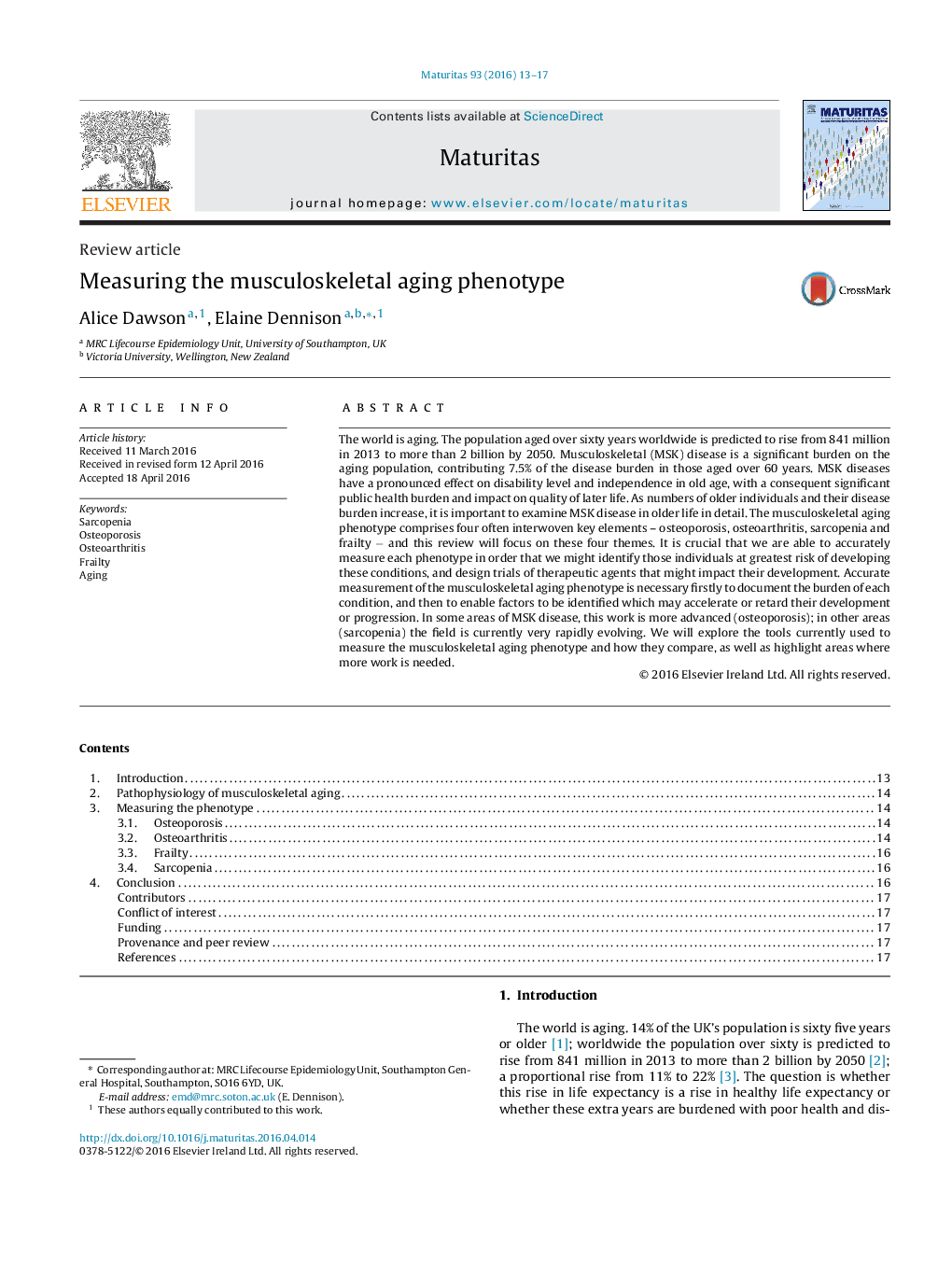| Article ID | Journal | Published Year | Pages | File Type |
|---|---|---|---|---|
| 5503525 | Maturitas | 2016 | 5 Pages |
Abstract
The world is aging. The population aged over sixty years worldwide is predicted to rise from 841 million in 2013 to more than 2 billion by 2050. Musculoskeletal (MSK) disease is a significant burden on the aging population, contributing 7.5% of the disease burden in those aged over 60 years. MSK diseases have a pronounced effect on disability level and independence in old age, with a consequent significant public health burden and impact on quality of later life. As numbers of older individuals and their disease burden increase, it is important to examine MSK disease in older life in detail. The musculoskeletal aging phenotype comprises four often interwoven key elements - osteoporosis, osteoarthritis, sarcopenia and frailty â and this review will focus on these four themes. It is crucial that we are able to accurately measure each phenotype in order that we might identify those individuals at greatest risk of developing these conditions, and design trials of therapeutic agents that might impact their development. Accurate measurement of the musculoskeletal aging phenotype is necessary firstly to document the burden of each condition, and then to enable factors to be identified which may accelerate or retard their development or progression. In some areas of MSK disease, this work is more advanced (osteoporosis); in other areas (sarcopenia) the field is currently very rapidly evolving. We will explore the tools currently used to measure the musculoskeletal aging phenotype and how they compare, as well as highlight areas where more work is needed.
Related Topics
Life Sciences
Biochemistry, Genetics and Molecular Biology
Ageing
Authors
Alice Dawson, Elaine Dennison,
